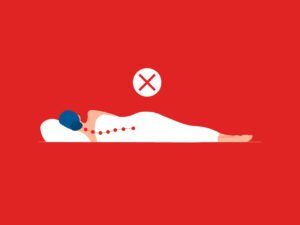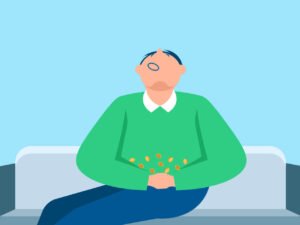You should feel a sensation of relaxation and sleepiness at the very first moment you enter your bedroom.
However, a poorly designed bedroom will achieve exactly the opposite and reduce your sleep quality.
In this post, I will give you scientifically proven methods on designing the best sleep environment to get the best possible sleep.
Contents
Use Top Sleep Promoter Colors for the Best Sleep Environment
The best walls color for the best sleep environment is blue, which is a very restful color to the eye. Especially its lighter shades.
Blue bedroom walls are associated with a calm mood,[1] which helps one sleep better and wake up happier.[2]
Color Therapy & Holistic Interior Design consultant Suzy Chiazzari says that it is because we relate blue to calm water and the blue sky.
The runner-ups are green and yellow, as we tend to associate green with nature and yellow with a happy mood.[3]

Grey and soft white are reasonable options for your bedroom walls.
The worst colors for your bedroom walls are red and purple.
Red walls might cause you to be stressed[4] because we associate red with energy, survival, and excitement.
The purple color is stimulating and might provoke nightmares.[5]
You can use a soft muted pink (similar to skin tone). However, don’t use too strong and screamy pink as it is too close to red.
Blue bedroom walls are associated with a calm mood, which helps one sleep better and wake up happier. Share on XView this post on Instagram
Remove All the Clutter
Your brain should associate your bedroom with sleep and sex only.
Anything that doesn’t support those two actions should get out of your bedroom.
Even when you are only reading a book before bedtime, do it outside of your bedroom.

The most common sleep killer object in bedrooms nowadays is probably the TV.
This is true especially for children:
A study found that kids with a TV in the bedroom watch the TV significantly more than children without a TV in the bedroom.[6]
The study also found that for every hour kids watch the TV in the bedroom, they sleep 7% less.
Another study found that youth with a TV in the bedroom:[7]
- Have lower grades.
- Suffer more from sleeping problems.
- Has more chances to adopt school problem behavior.
In addition, watching screens an hour before bedtime can reduce melatonin (sleep hormone) production by 80%.[8][9][10]
Other common sleep-disturbing objects are:
- Unused clothes.
- Any art decoration that doesn’t create a relaxing environment.
- Mirrors that reflect your bed (might reduce your energy according to feng shui).
So the second step towards creating the best sleep environment is to make sure you remove everything unnecessary in there.
For every hour kids watch the TV in the bedroom, they sleep 7% less. Share on XKeep Your Bedroom Ventilated
It’s important to keep the windows in the bedroom open in order to keep the negative electrical charge of the ions.
Those negative ions are common near waterfalls, oceans, rivers, forests, and mountains.
This is why the air in those places feels so fresh.
Researchers found that people fell asleep easier in bedrooms with negative oxygen ions and had better sleep quality.[11]
Data also shows that negative ion exposure can increase relaxation and calmness.[12][13][14]
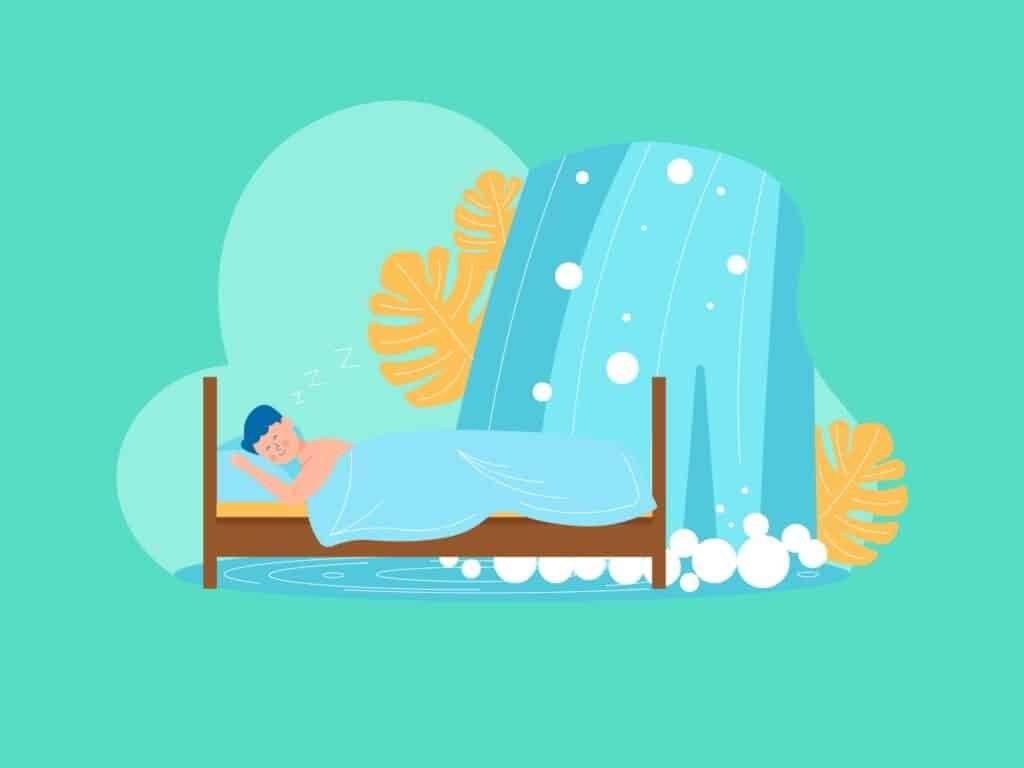
However, it is not always possible to keep the windows open during the night.
Artificial light might enter your bedroom, it might be too noisy outside, or maybe it’s too cold, etc.
If you are like me, you probably sleep with the windows and shutters fully closed.
So how do you keep the air in your bedroom fresh during the night? Here are two options:
1. Air ionizer
An air ionizer is a device that purifies the air, eliminates odors, and generates negative ions.[15][16]
Studies show that it can improve sleeping quality[17] and might have an antidepressant effect.[18]
Some other benefits related to ionized air are:[19]
- Improvement or cure in asthmatic children.
- Has sedative effects.
- Decrease headaches.
- Stabilize mood.
I don’t think it’s a good idea to use it during the day in case you are in your bedroom because it might reduce the level of serotonin in the blood or brain within 10 minutes of use.[20][21]
Our body should create serotonin during the day so that it will be converted into melatonin at night.
Therefore, if you choose to use the air ionizer, I believe it is best to use it after sunset.
2. Plants
Plants are a better solution than air ionizers (in my opinion) and a more natural one.
Some benefits of plants in the bedroom are:
- Reduces stress.[22][23]
- Nature elements seem to enhance feelings of meaningfulness and strengthen the feeling of well-being.[24]
- Releases negative ions into the air.[25]
- Six potted plants decrease the CO₂ concentration in a room by almost a half.[26]
- Remove trace organic pollutants[27] and small amounts of formaldehyde from the air.[28]
- Decrease dust accumulation.[29]
What are the best plants to improve your sleep?
Sansevieria trifasciata (the snake plant)
A very low-cost solution to purify indoor air quality.
Sansevieria trifasciata can absorb more than 60% of the formaldehyde in the air within 7 days.[30]
Combined with Zamioculcas zamiifolia, the snake plant can remove more than 95% of pollutants within 48 hours.[31]
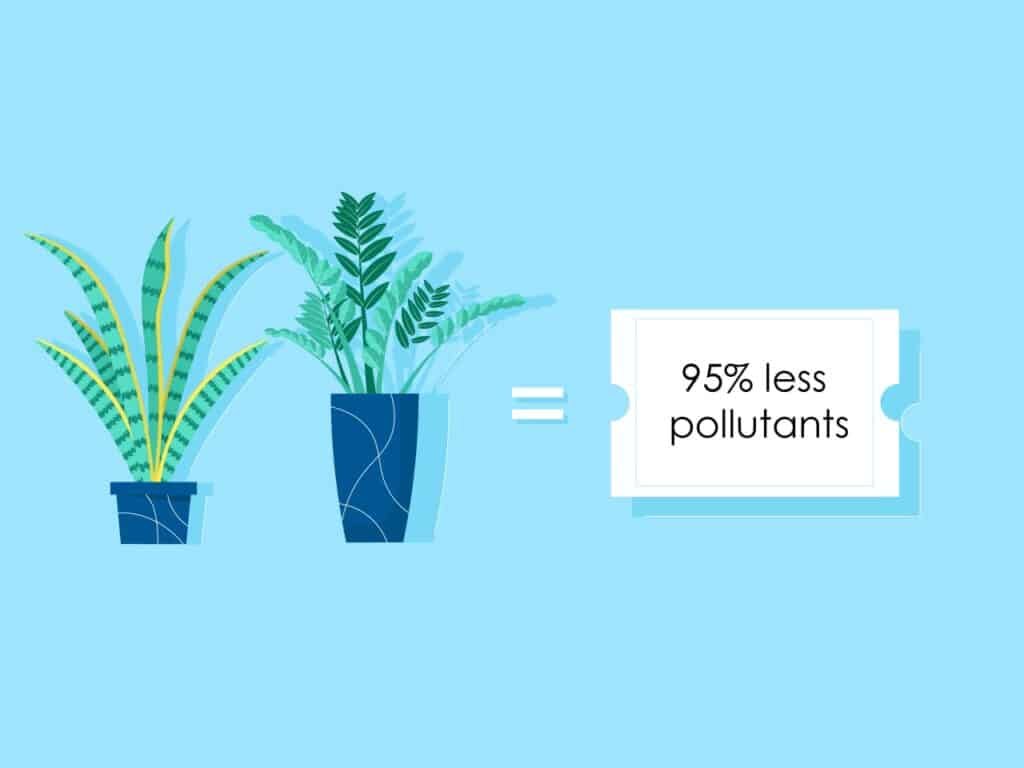
It is also very easy to maintain because it doesn’t require direct light or a lot of water.
How to grow Sansevieria trifasciata
- Locate it in a place with an indirect light combined with a short period of direct sun.
- Keep the plant away from strong wind.
- Too much water will kill the plant. Water only when the soil is completely dry. About 200 ml of water each time. NO more than once a week.
- Best to grow in the temperature range between 20 to 32 degrees Celsius (70 – 90 degrees Fahrenheit). It’s not recommended to grow it below 10 degrees Celsius.
- Do not fertilize in the winter.
Aloe Vera
Aloe Vera has strong absorption of indoor formaldehyde and can remove harmful substances in the air.[32]
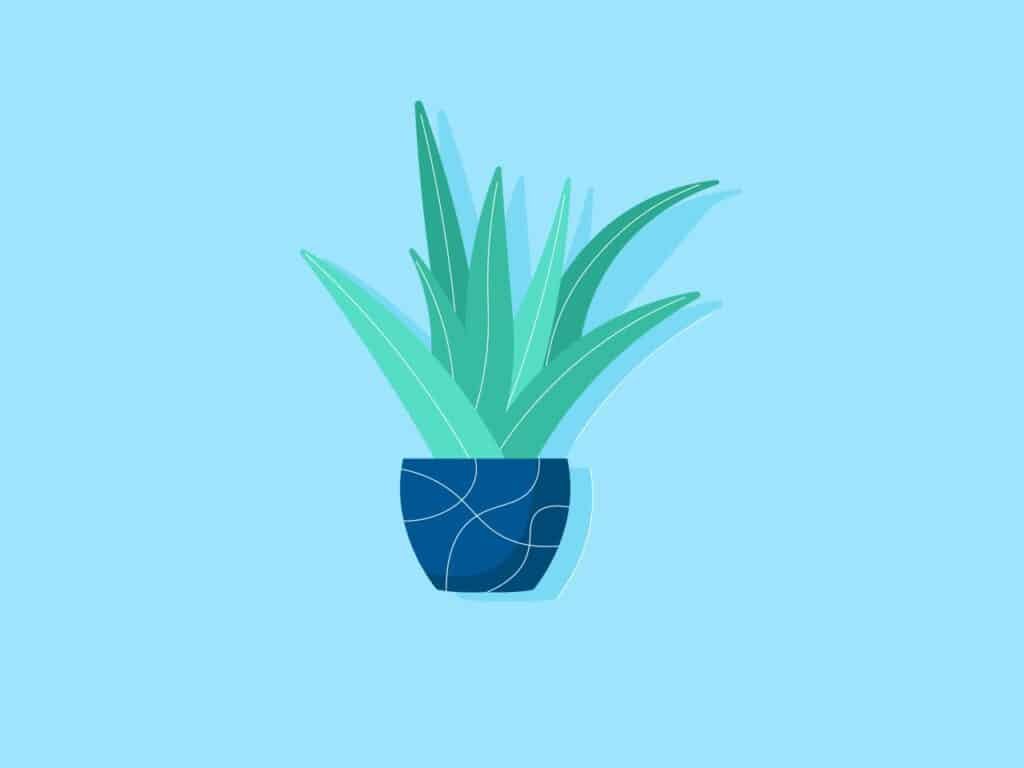
How to grow Aloe vera
- Locate it in a place with indirect sunlight or artificial light.
- Water it only when the soil is completely dry. About once every 2 weeks in the summer and once every 3 -4 weeks in the winter.
- Best to grow in the temperature range between 12 to 27 degrees Celsius (55 – 80 degrees Fahrenheit).
- Fertilize once a month or once every two months. Do not fertilize in the winter.
Jasmine
Jasmine has a sweet fragrance that makes you feel more relaxed, happy, and ready to sleep.
Some jasmine plants do not have a fragrance, so make sure the one you get has that sweet smell.

How to grow Jasmine
- Locate it in a partly sunny place.
- Water frequently so the soil is always slightly moistened but not too much that it becomes flooded with water.
- Best to grow in the temperature range between 15 to 24 degrees Celsius (60 – 75 degrees Fahrenheit).
- Fertilize once a month or once every two months in the spring and the summer with a liquid fertilizer.
Rose
Rose helps you to relax and to fall asleep.[33]

How to grow Rose
- Locate it in a place with at least 7 hours of direct sunlight a day.
- The rose requires a relative humidity of at least 45% (60 -70% is the best). You can use a humidity tray to create a constantly humid environment for the plant.
- Water frequently so the soil is always slightly moist but not too much that it is flooded with water.
- Best to grow in the temperature range between 18 to 24 degrees Celsius (65 – 75 degrees Fahrenheit).
- Fertilize every 2 weeks during spring and summer with a rich-phosphorus fertilizer.
African Jasmine
African Jasmine relaxes the nerves of the human body, facilitates sleep, and can improve work efficiency.[34]

How to grow African jasmine
- Locate it in a partly sunny place with well-circulated air.
- Water frequently so the soil is always slightly moist but not too much that it becomes flooded with water.
- Best to grow in a temperature range between 15 to 24 degrees Celsius (60 – 75 degrees Fahrenheit).
- Fertilize once in the spring and once in the summer with a rich-phosphorus fertilizer.
Rubber tree
The main function of the rubber tree is to absorb dust.
It also purifies harmful gases such as carbon monoxide, carbon dioxide, and hydrogen fluoride in the air.
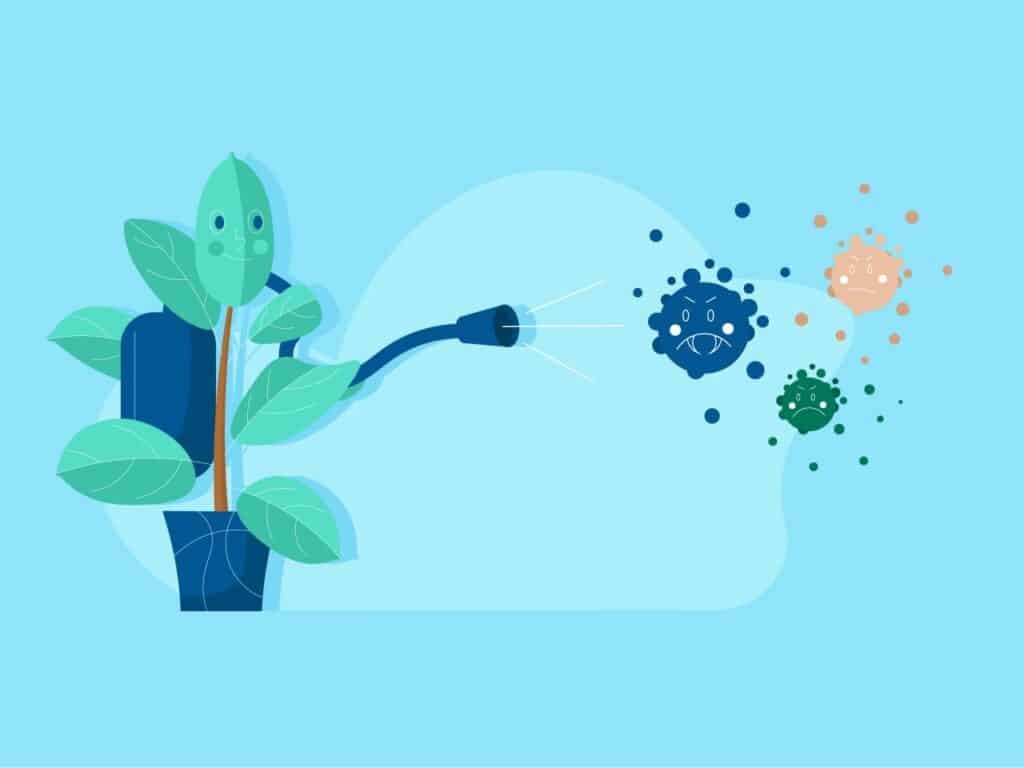
How to grow a rubber tree
- Locate it in a place with indirect sunlight and well-circulated air.
- In the summer, water it frequently so the soil is always slightly moist. In the winter, water every 2 – 3 weeks.
- Best to grow in a temperature range between 15 to 27 degrees Celsius (60 – 80 degrees Fahrenheit).
- Fertilize every couple of weeks during the spring and summer.
Chlorophytum (the spider plant)
Chlorophytum purifies the air, makes you feel more relaxed, and can help you to fall asleep.

How to grow chlorophytum
- Locate it in a place with indirect sunlight, preferably near the window.
- In the summer, water it frequently so the soil is always slightly moist. In the winter, let the soil dry a bit between waterings.
- Can be grown in the temperature range between 10 to 30 degrees Celsius (50 – 85 degrees Fahrenheit).
- Fertilize every 2 – 3 weeks during the spring and summer with liquid fertilizer.
In conclusion…
The third step towards creating the best sleep environment is to keep your bedroom ventilated by using an air ionizer, plants, or if there is no noise and artificial light coming from the outside, you can just keep the windows open.
Keep Your Bedroom Cool
Bedroom temperature has a very big impact on your sleeping quality.[35]
If your bedroom is too hot, you are probably going to have a lousy sleep quality.[36]
The temperature for the best sleep environment is 15 – 20 degrees Celsius (60 – 68 degrees Fahrenheit).
I wrote a definitive guide about how to keep yourself cool at night, which I highly recommend you to read.
Until then, here are 6 quick hacks to keep your bedroom cool:
- If you can’t use air conditioning, get a bowl or two buckets of ice and put it in front of your fan.
- Consider using a cooling mattress topper.
- Plants with larger green leaves are effective for cooling the room down.
- Turn off the lights in your bedroom whenever they are not in use.
- Whenever you do use lights in your bedroom, prefer low-temperature light sources, such as a salt lamp or candles.
Block All Noises
Environmental noise is one of the major causes of disturbed sleep.
Nocturnal noises can harm your sleep even if you are not consciously observing them.[37]
In addition, nocturnal noises cause increased blood pressure, heart rate, pulse amplitude, body movement, and vasoconstriction.[38]
Soundproof Your Bedroom
The best window to keep your bedroom quiet is a double-pane window with a uPVC frame.
Double pane windows are made of two panes of glass separated by air or gas. Combined with a uPVC frame, it aids in noise reduction.
If there is noise coming from the inside of your house, try to soundproof your bedroom door.
Here are 9 simple ways to do it:
If you are willing to put in some extra effort, you might want to consider soundproofing your bed.
Mask Nocturnal Noises
However, sometimes it’s impossible to make your bedroom 100% soundproof.
For example, soundproofing your ceiling might not help if your neighbor loves to walk with high heels shoes.
This is where white noise comes to your help…
White noise is a random signal having equal intensity at different frequencies.[39]
To put it more simply, it’s the noise that comes from fans, rivers, waterfalls, etc.
The white noise masks the nocturnal noises that disturb your sleep and helps to improve your sleep quality.[40][41]
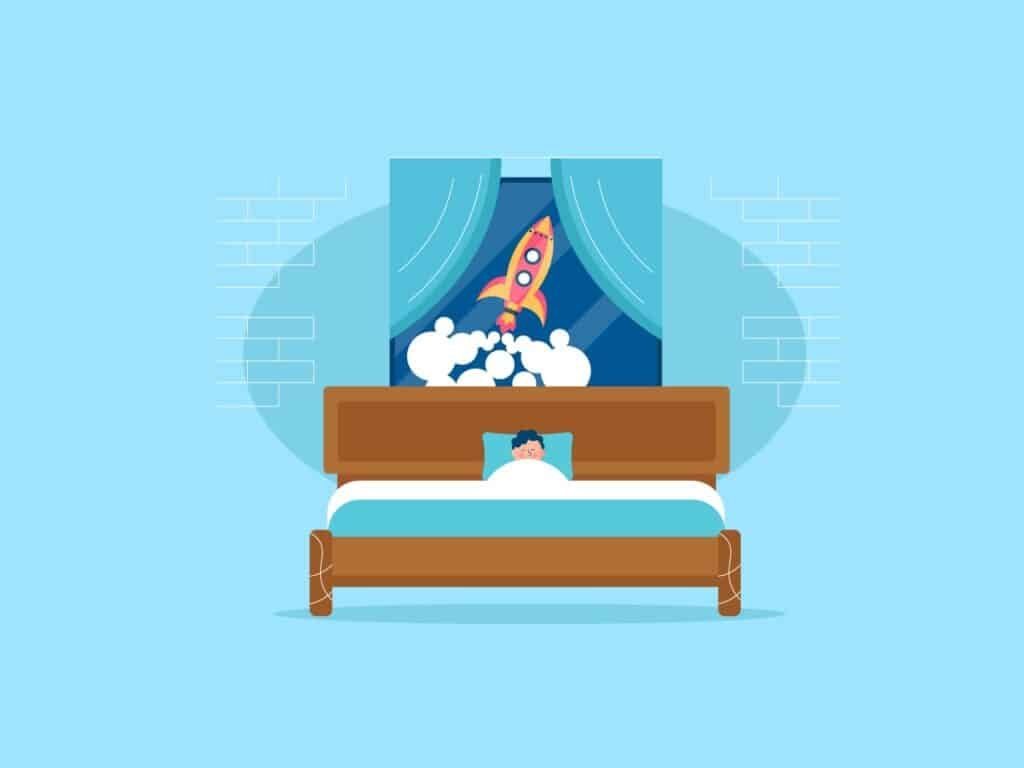
In a study, playing white noise to neonates made 80% of them fall asleep within 5 minutes.[42]
You can use a white noise machine to enjoy the benefits of white noise for your sleep.
However, there are many free white noise apps on the app store, which produce the same results.
I prefer to use an alarm clock app that also has a white noise feature because when the alarm goes off, it stops playing the white noise immediately.
I actually built a free android app that does exactly that:
If the nocturnal noises are too strong to be masked, you will probably need to play the white noise using active noise-canceling headphones.
In case you decide to sleep with headphones, please read first the article: How to Sleep with Headphones: 4 Crucial Rules for Comfort and Safety.
Long-term use of headphones on high volume might damage your hearing, so don’t go crazy with the volume. Err on the safe side.
If for some reason, you don’t like the white noise, you can use earplugs.
The white noise mask noises better than earplugs, in my opinion, but some people claim the other way.
In conclusion, your sleep environment has to be as quiet as possible.
If you live in a noisy environment, try the techniques I mentioned above.
Block All Lights
As I explained in The Best Light for Sleep article, it’s OK to use some specific light sources at night.
However, besides those exceptions, any light will make your brain think it’s daytime and will disrupt your circadian rhythm.[43]
The best sleep environment is so dark that you can’t even see your hands.
You might be able to fall asleep with the lights on, but you will have a low-quality sleep.
In case there is a light entering your bedroom from the outside, you want to blackout your windows.
Here are 4 ways to do that:
If it is impossible to blackout the bedroom, the least you can do is to use an eye cover.
In case there is a light entering your bedroom from the outside, you want to blackout your windows. Share on XFinal Words…
I used to make many mistakes in designing my bedroom for optimal sleep.
As a result, I had a poor sleep and no energy in the morning.
When I heard that some elements of bedroom design could affect our sleeping quality, I decided to do research on how to create the best sleep environment.
This blog post is the outcome of this research.
The results of the techniques mentioned in this post astonished me…
I can’t imagine myself sleeping without white noise, a blackout bedroom, and the other techniques I have learned.
Here are some of the benefits I experienced because of the bedroom makeover:
- There is a sleep sensation anytime I enter my bedroom.
- I experience better sleeping quality.
- My bedroom looks better.
I hope and believe that it will do the same thing for you.
So decide what the first technique you are going to try and take the first step right now is.
Tip: If you are interested in gadgets that will improve your sleep, check out the article ‘10 Cool Things for Your Bedroom that Can Make You Sleep Better‘.
p.s.
Do you want your friends and followers to know how to create the best sleep environment and to help this blog to grow at the same time?


